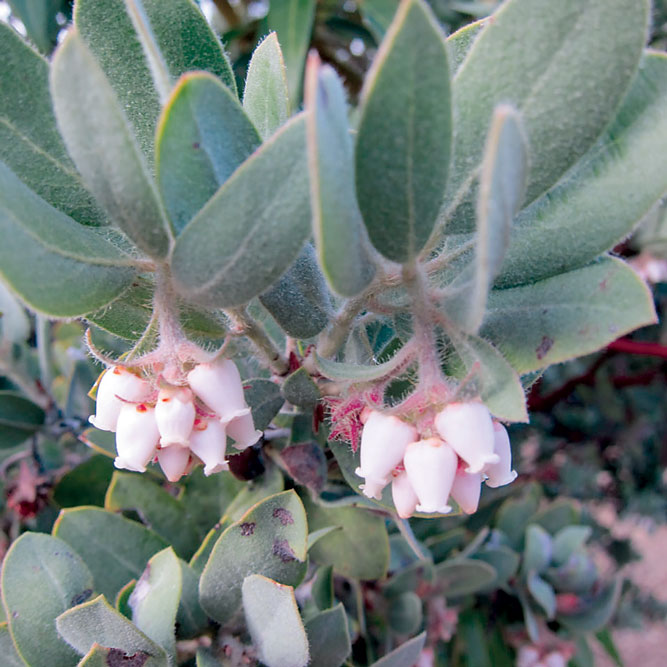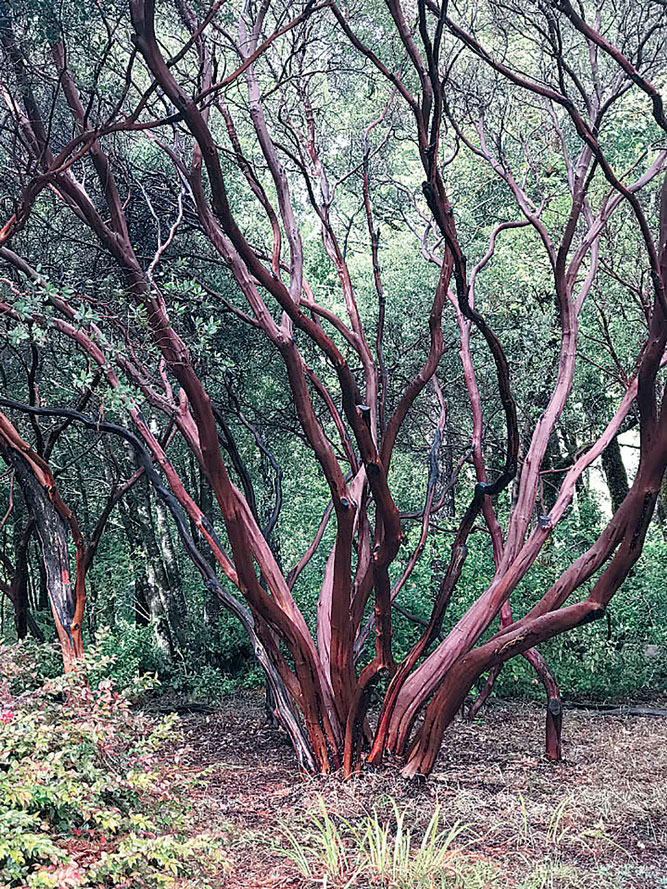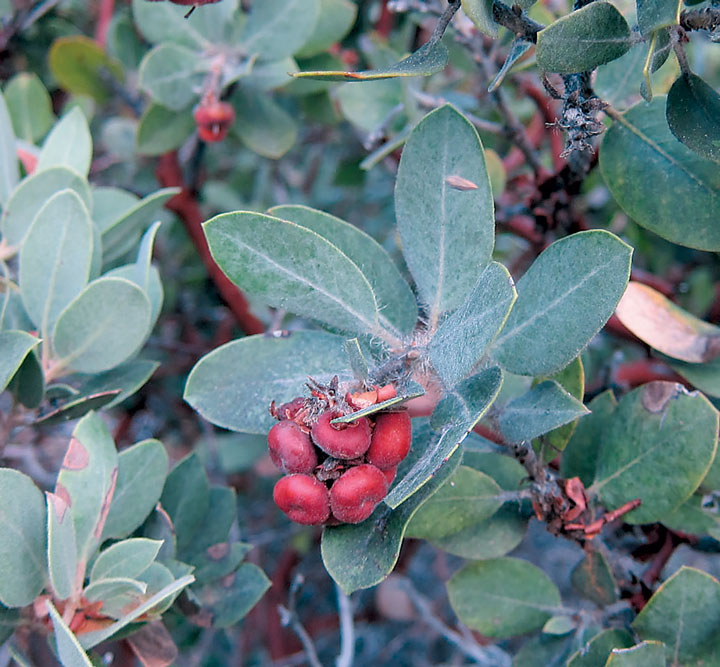Plant Notes
Manzanita

One of California’s most beautiful native shrubs, manzanita, blooms in winter. If you happen to be near a blooming manzanita, you are likely to see and hear Anna’s Hummingbirds, who stay for the winter and feed on the flower nectar rather than flying south. Some manzanitas here in northwestern California start to bloom as early as the new year, some bloom as late as April, but most bloom in February and March. Manzanita flowers are usually pink, but some plants have white flowers. Blooming at a time of year when food is scarce, manzanita flowers are an important source of pollen for butterflies, bees, and other insects.

Once flowers are pollinated, fruit forms. The fruit, or berry, resembles a little apple, which is what manzanita means in Spanish. Berries are a good source of food for birds and bears. If you come across bear scat it is likely to be full of manzanita berries.

Humans have uses for manzanita as well. The fresh berries can be eaten or made into cider. Dried berries make a nutritious meal or porridge. A tea or decoction made from the leaves is said to help reduce poison oak rash. In the garden, manzanitas make strikingly beautiful specimens and are drought-tolerant. All have distinctive smooth red-brown bark that peels in mid-summer to reveal green bark underneath, which quickly darkens to red-brown.

Usually found in chaparral, grassland, or forest margins, manzanitas are sun lovers. Like their close relative, the madrones, they will reach toward sunlight if they become shaded out by other plants. Many forested ridges have old dead manzanita branches lying about, indicating that the ridge was once grassland. Due to lack of fire, the grassland was overtaken by manzanitas, which were subsequently shaded out and overtaken by the Douglas-fir and tan oak forest that moved in later.
The genus name for manzanita is Arctostaphylos, which means “bear berry” in Greek. There are 65 species of Arctostaphylos native to California, and many more subspecies. A good way to find out which species grows near you is to use The Field Guide to Manzanitas, by Kaufmann, Parker, and Vasey. The range of Arctostaphylos is mostly Southern Oregon to Northern Baja California, but a few species range farther. Manzanitas are in the heath family, Ericaeae, and are related to madrone, huckleberries, salal, rhododendron, azalea, heath, and heather.

